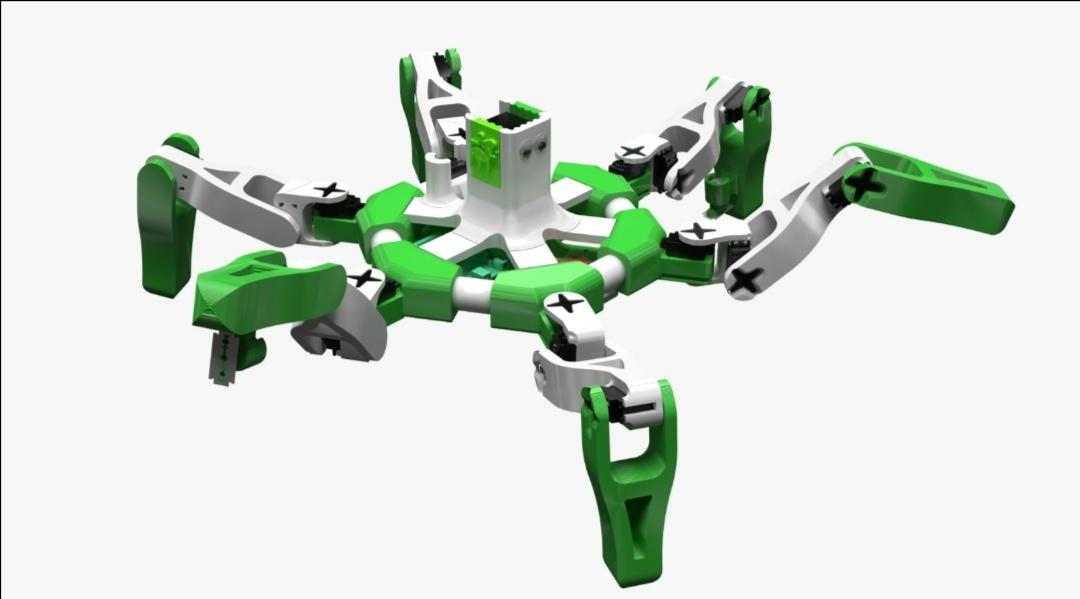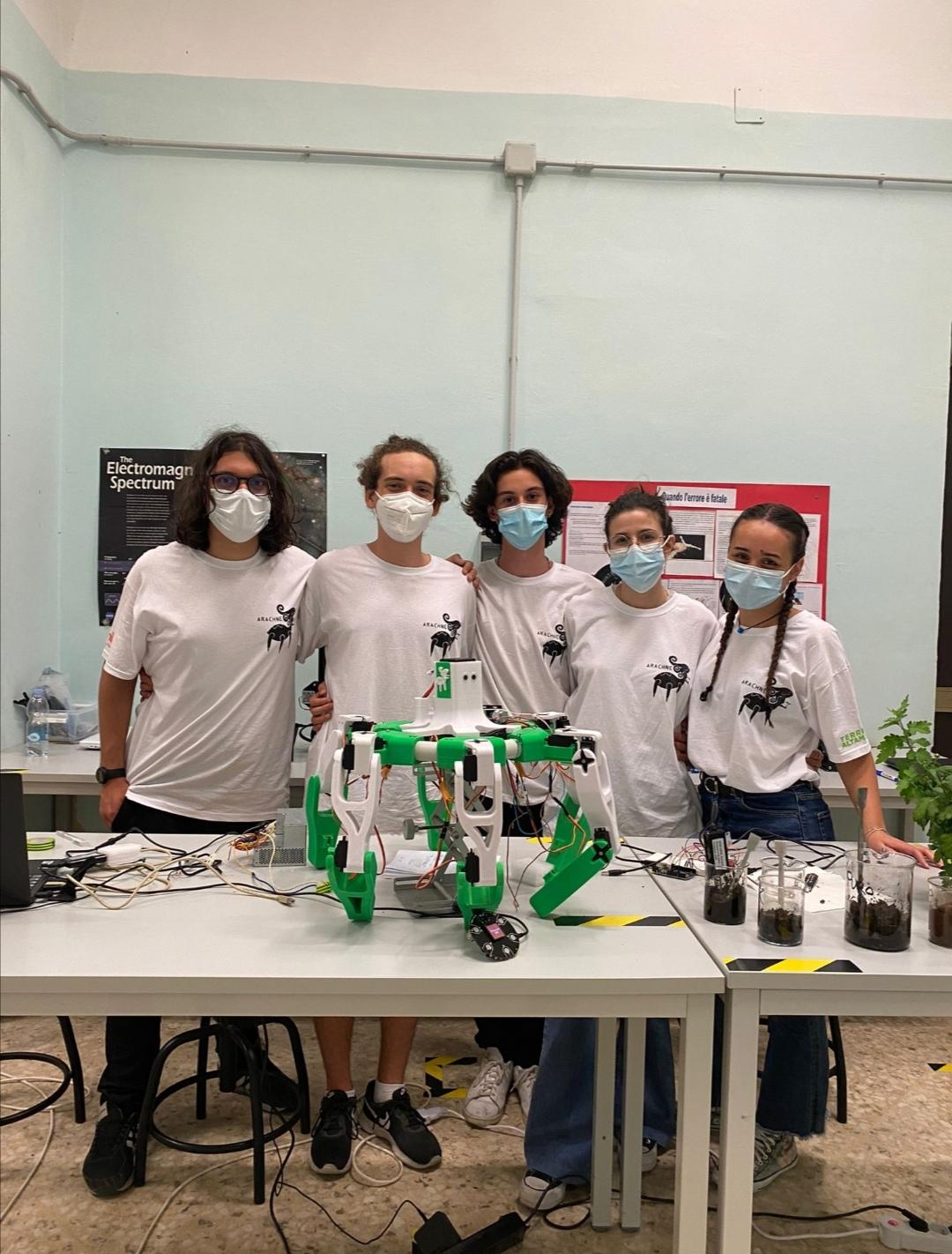Exhibitors 2021
- FASHION & WEARABLES
- INTERNET OF THINGS
- PRODUCT DESIGN
- 3D PRINTING
- 3D SCANNING
- ART
- ARTIFICIAL INTELLIGENCE
- BIOLOGY
- EDUCATION
- HACKS
- KIDS & EDUCATION
- OPEN SOURCE
- ROBOTICS
- MUSIC & SOUND
- ARTISANS & NEW CRAFT
- RECYCLING & UPCYCLING
- STEAM PUNK
- GAMES
- SCIENCE
- YOUNG MAKERS (< 18)
- FOOD & AGRICULTURE
- CIRCULAR ECONOMY
- AEROSPACE
- HOME AUTOMATION
- NEW MANUFACTURING
- STARTUP
- WELLNESS & HEALTHCARE
- ENERGY & SUSTAINABILITY
- FABRICATION
- INDUSTRIAL AUTOMATION
- RETROCOMPUTING
- DRONES
- CULTURAL HERITAGE
- VIRTUAL REALITY
A.R.A.C.H.N.E. (Agriculture and Rural Analyzing Cognitive Hexapod Noxious weed Exterminator)
A.R.A.C.H.N.E. (Agriculture and Rural Analyzing Cognitive Hexapod Noxious weed Exterminator) is born from an environmental analysis: the Earth can�t stand the humans� ecological footprint and the remaining resources are not enough to guarantee the survival of all. We have to return to being eco-friendly and one way of getting closer to this goal is to end the era of extensive and aggressive agriculture. In our small way we have devised a prototype that can act in the agricultural world that turns out to be the cause of enormous waste of resources.
A.R.A.C.H.N.E. is able to probe the soil, mapping and weeding the weeds to reuse them for soil mulching. Our model is a Hexapode built using 3D printed parts and easily available components.
The prototype is designed for working in fields, it means that it has to move in soil of very variable friability and firmness. High manoeuvrability, stability and precision are absolutely necessary characteristics to achieve sufficient effectiveness in order to realise the set goals so we have decided to opt for legged robotics. A six legs configuration allows simultaneously lifting three legs remaining passively stable and in A.R.A.C.H.N.E.�S case it�s the best choice.
The motion management algorithm can be divided into three parts: Motion Planner, Inverse Kinematics and Interpolator.
To perform weeding and soil and plants analysis it�s necessary to know the plant�s location present in the working field. The user has to do a calibration process at the first use delimiting on the map the boundaries of the field; then a route will g�be generated that will cover all the area using a space filling curve. This will happen while A.R.A.C.H.N.E. will be following this route keeping the camera on, when it identificates a plant it will bring it back on the map and then generate a non-orientated graph.
A.R.A.C.H.N.E. will do soil analysis with a five-points sensor capable of analysing the Nitrogen, Phosphorus and Potassium (K) concentration, the pH, the temperature, the humidity and the salinity. For analysing the individual plants we�ve decided to use a photographic approach.
A.R.A.C.H.N.E. plans to combine both algorithmic and machine learning approaches. With the first one you can get info like the average color of the plants from which you can deduce their level of chlorophyll. With the second one you can understand the species of the plant assigning a score of well-being, identifying pathologies and much more.
A.R.A.C.H.N.E. is also equipped with an Arduino MKR Wifi 1010 board, used to connect A.R.A.C.H.N.E. to a database, and an MKR Iot carrier with five tactile buttons, used to memorise the previous Npk values, and also an LCD display on which the values of the NPK sensor are shown. There is also a PIR sensor to detect movements and an accelerometer to verify the stability of the robot.
For weeding, a camera will be used for plants� analysis. Using machine learning algorithms A.R.A.C.H.N.E. will be able to identify which parts of the area photographed are occupied by the cultivated plants and which by weeds.
For mechanical weeding, it was decided to proceed by mowing. The tips of the two central legs of A.R.A.C.H.N.E. will be equipped with a system of rotating blades that will be activated when a weed is detected.
Paolo Ginefra, Antonio Manuel Marulli, Alice Grossi, Giorgia Mira, Claudio Capurso, Fabrizio Di Carlo
A.R.A.C.H.N.E. is not only the result achieved by three students expert in robotics, mechanics and computer science, but it was born from a guided and in-depth environmental analysis with two expert colleagues. We are Paolo Ginefra, Antonio Manuel Marulli e Alice Grossi and we are the three robotics experts and our friends Giorgia Mira and Claudio Capurso are the environmental ones. There is also another component of the team that is Fabrizio di Carlo, the composer of the soundtrack of the three A.R.A.C.H.N.E.�s presentation videos.
We have worked as a real team even though we have been forced to stay at home, so we worked through our pc but fortunately the assemblage of the robot took place in our school lab.
In our team, however, we have also collaborated with external experts such as agronomists who have allowed us to analyze more specifically and accurately the problems discussed with our classmates more experienced in the environmental field. We must also thank the two sponsors, Terre di Altamura and Megamark, who allowed the realization of our prototype by financing the purchase of the materials with which A.R.A.C.H.N.E. is built.




















































































